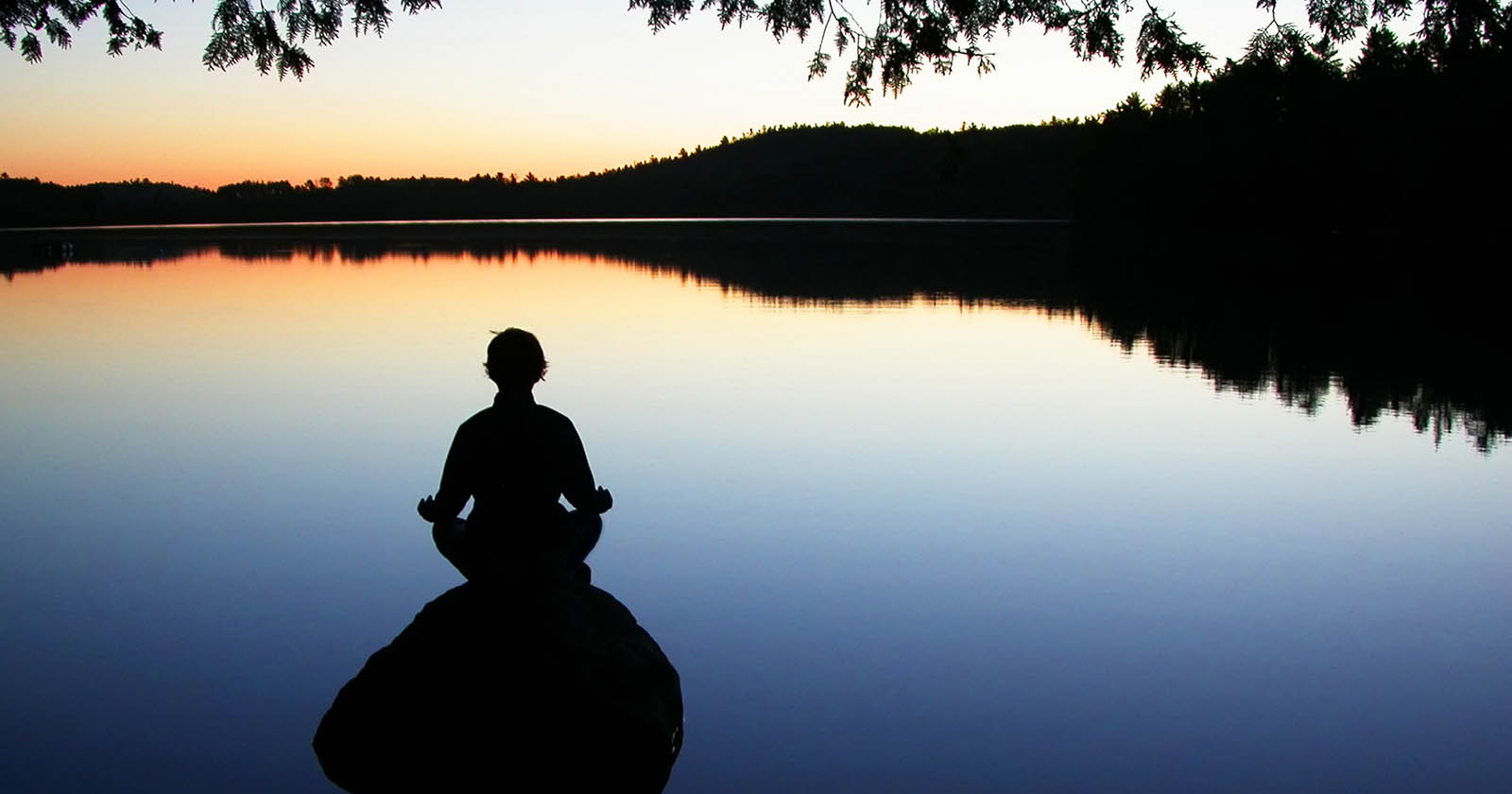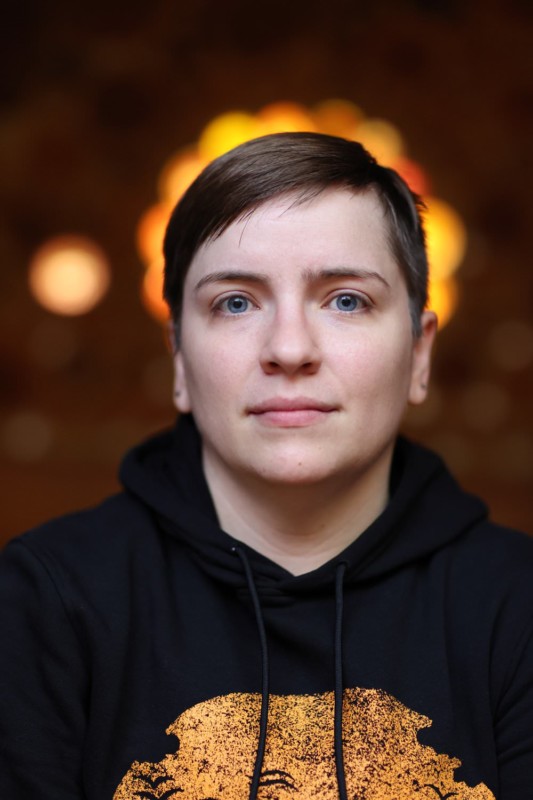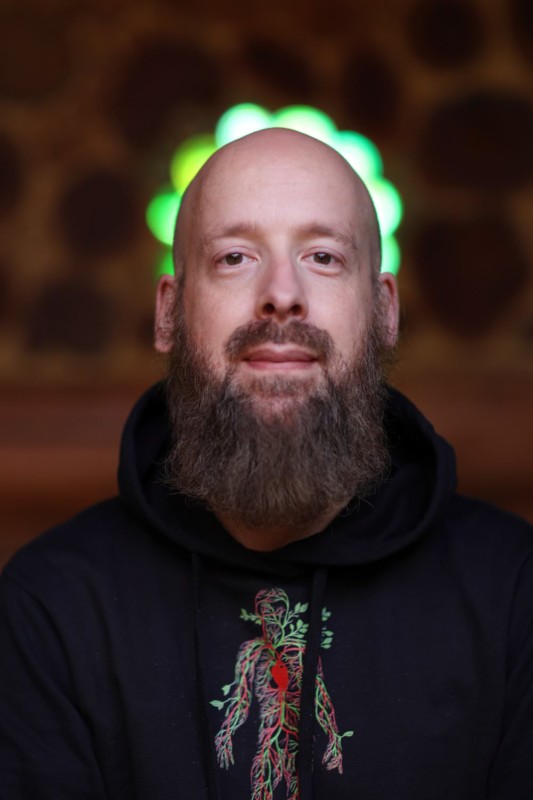
Wouldn’t you like to stay focused and calm even when multitasking and shooting in a very demanding situation? How about being able to notice everything without being distracted by anything? Meditation can help and that’s why many photographers are getting into it. Intrigued? Read on…
How many times have you looked at a photograph you’ve taken and said to yourself, “Ah, I didn’t realize that thing was in the background!” How come? Perhaps it’s because in taking a portrait, you are so busy trying to capture the expression of the person in front of you that you don’t have any attention left to check anything else. You might say you are very focused. Or, maybe, that you are… very distracted! Let’s see why.

Managing Attention
Learning to manage one’s attention while photographing is just as difficult as when we are engaged in meditation and a thought suddenly pops into our mind: did I close the window in the other room? Suddenly that question seems very important to us. As we try to remember whether we closed it or not, it occurs to us that there is beautiful sunshine outside the window and that we are a little too sedentary and should be out in the sun more; in fact, we should be out in nature more, and we could plan a trip. But the last trip we took let us down a bit, so where could we go this time? Thus, we lose our concentration by following our thoughts. When we notice this, we turn our attention back to the breath (if that is the meditation we were doing), and our mind calms down. Until another thought distracts us again.
Distracted by a Detail
We might be inclined to think that when we shoot a portrait, the subject we focus on is like the breath we draw our attention to when meditating, but this is not necessarily so. On the contrary, the face we carefully observe can become just like the thought of the open window: this expression is no good, maybe I need to move or say something, he has a look that doesn’t convince me and the picture won’t be good, then the viewer will be disappointed… and so our attention is sucked in by a detail.
This Sounds Like a Paradox, But…
At this point, one could argue that the window is a thought that distracts us from keeping our attention on our breathing, but what does the subject distract us from? We have to keep our attention precisely on the subject, right?
Yes and no. We need to keep our attention on the subject and the environment they are in, as well as a number of other things, including the background (which we talked about earlier), the composition, the light, the point of view from which we frame, the overall impact and proportions, the colors, the position of our subject, their gaze, expression, clothes, hair and, most importantly, the relationship between us.
Our ability to connect and communicate with the subject will allow us to photograph a mood, something intimate and not just their form.
We are not necessarily focused if we are intensely concentrated on one element. Rather, we might say that a detail has pulled us away and distracted us from the overall view, much like when a thought captures our attention during meditation. Or, perhaps, it’s even more accurate to say that our attention needs to be free, aware of everything without following anything. Not even the camera settings that – in fact – would be better adjusted with agility and minimal effort. And in this, experience helps a lot.
General and Particular

When shooting, it helps to be in the habit of perceiving the image’s overall impact at a glance and, simultaneously, checking all the details while avoiding (as mentioned above) letting any single detail absorb our attention too much. If we are not able to maintain an overall view, it may happen that when we review the image, we notice something that we had not noticed when taking the picture (as in our first example of the background).
In truth, this is also one of the most fascinating things about photography: we set the stage and try to pay attention to every aspect of the image we want to shoot, but then the result is always a surprise. We have to take into account little distractions of our own and also unexpected behavior of the subject or unforeseen events outside of us, for example, a sudden gust of wind or someone entering the frame. It’s all part of the magic of an image that will be unique and unrepeatable, as all photographs are.
Concentration and Silence
When approaching meditation, we learn that it is important to focus our attention on the breath. Whenever a thought arises and distracts us, we need to refocus on the rhythm of the air entering and leaving our lungs while causing a point below our navel to move up and down.
Actually, it’s not so important to focus our attention on the breath; rather, it’s important not to follow the concatenation of thoughts. Directing our attention to the breath is just a stratagem to calm the mind.
When – usually after several years of practice – we have learned not to be carried away by thoughts, we can loosen our concentration on the breath and include in our sphere of awareness every internal and external perception: noises, sensations, thoughts… In practice, we will be able to notice everything without allowing ourselves to be distracted by anything. Our mind will (in principle) be calm and quiet.
While photographing, those who are able to keep a clear mind and take in all the elements without being distracted by anything in particular are having a somewhat similar experience. In other words, photographing can be a form of active meditation.
Focusing

Photography is not the only discipline in which it helps to have an overall view while still paying attention to the details. In sports, such as free climbing or boxing, it’s crucial to have a mind free of distractions and be able to focus on what you are doing. One must consider all the variables of the situation one finds oneself in and be very present. It’s hard to imagine a boxer during a fight starting to think about what he is going to do the next day, right? Not surprisingly, many athletes report that when they are fully concentrated, their sense of time tends to dissolve. Just as happens during meditation.
Unlike meditation, however, sports and photography have another thing in common: a certain amount of adrenaline – the hormone our bodies produce in times of mental and physical stress.
We could consider stressful situations and mental calmness to be antipodes. What photographer has not experienced at least once feeling agitated and forgetting something crucial while shooting? Where was the mental calm? When under pressure, it’s easy to react recklessly to the situation. Yet it is possible to learn to calm your mind, even in stressful situations, so you don’t react but rather respond to the situation with the appropriate action. This is why photography and meditation can go so well together. Mind you, even those who have a lot of experience with meditation cannot be sure of maintaining seraphic calm in high-stress situations, but in principle, educating one’s attention helps.
Useful Failures
Considering that when we photograph, we look at the world outside of us, and when we meditate, we turn our gaze inward, the combination of photography/meditation may seem like nonsense. But it’s not, because we can learn to look at the world around us with a calm mind developed through meditation. Moreover, meditation and photography have other aspects in common besides those already mentioned. In both cases, it requires commitment, discipline, and dedication. It takes a lot of practice and many failures before we gain some skill and familiarity.
Both meditation and photography can help you perceive the world with a fresher and more immediate perspective and can help you notice what often goes unnoticed. How so?

A Fresh Way of Seeing
When we are infants, every experience is a surprise, and we are enchanted by what we observe around us. Perhaps in our childhood at some point a cute friend appeared and filled us with attention. We studied him carefully, put a hand in his mouth, bit his ear, and then were taught that he is called a “dog.” Ah, this is a dog! Gradually, our direct experience turned into a concept. Now, when we see a four-legged animal with a wagging tail, we know it is a dog without having to observe the scene for a long time.
Concepts allow us to remember, recognize, plan, compare, etc. We can connect ideas, make plans involving things and people who are not present, and have opinions about them based on past experiences. We can communicate. In other words, the concepts are really very useful to us. There is a downside, though. We tend to direct our attention more to concepts than to direct experiences. As a consequence, we often live in our minds.
When we meditate and when we photograph, we are caught between being distracted and staying intensely focused on the here and now, on the direct experience. Both practices require us to continually bring our attention back to the present moment, and in some way, both also challenge our habit of observing the world through past experiences.
By meditating, we shift our attention from the ideas and concepts crowding our minds to the direct experience of the moment. Through photography, we have the opportunity to do the same thing. It takes a lot of practice, some dedication, and a desire (not a given) to want to look at the world around us with fresh eyes.
My Personal Experience
I started meditating long before I became a professional photographer, and I’ve always noticed a certain affinity between the two disciplines. It’s something I have kept to myself because photography is my professional identity, while meditation is a personal practice that I don’t necessarily feel the need to talk about with everyone.
My approach, however, has not gone unnoticed. One of my students once asked me whether photography or Buddhism was more important to me, and was surprised when I told him that I am not a Buddhist. Perhaps he asked me because, when I teach, the things I love to share the most are the very things that are least expected in a photography class and also the most appreciated. With my students, for example, I explore our ability to manage attention in the various stages of shooting, even when we are photographing a difficult subject, when we are feeling insecure, or in other situations that challenge us.
![]()
Many Approaches
I thought I was the only one (or at least a rarity) who conceived the act of photography as a kind of active meditation, but I was wrong. Only recently have I realized that there are many photographers who find satisfaction in combining the two practices. Some speak of Zen photography, others of contemplative photography, others of meditative photography, and still others of introspective photography.
There is also a discipline called Miksang (or rather, Nalanda Miksang), and these are teachings on perception, which are part of the broader dharma art teachings, themselves part of the Shambhala teachings developed by the Tibetan Buddhist meditation master Chogyam Trungpa. Here, in a way, my student was right to question whether I was a Buddhist, even if it wasn’t my approach and path.
When, years ago, I was completing my meditation teacher training and my school had asked me to teach, after starting, I realized it was not for me. I feel more comfortable teaching photography and highlighting how a calm mind can help to nimbly complete all the steps necessary to make a portrait (and for so many other activities as well).
It is no coincidence that in recent years, which have been very unpredictable and turbulent, there has been a significant increase in the number of people taking up meditation.
Statistics show that the main reasons for meditating are:
- 84% reduction of stress and anxiety.
- 53% improvement in concentration and memory.
- 52% improvement in performance at work and/or school.
So these are not necessarily people with a mystical orientation, but rather individuals who wish to have more serenity, even in dealing with high-stress situations. And photographers are no exception.
The opinions expressed in this article are solely those of the author.
About the author: Enzo Dal Verme is an Italian portrait photographer drawing on over three decades of experience in meditation. He approaches photography as a path of self-discovery and personal growth. His portraits have been published in Vanity Fair, l’Uomo Vogue, The Times, GQ, Elle, and many other magazines around the world. This article was originally published on photography-retreats.com.
Image credits: Header photo from Depositphotos







